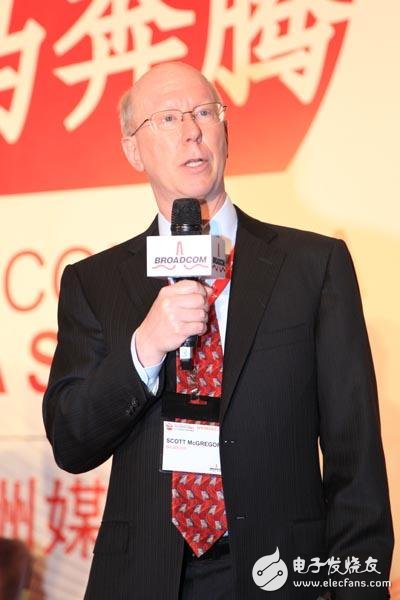“If I give a gift to my wife now, is it a luxury that sends wearables or a similar jewel? At present, the wife definitely prefers jewelry.â€
Dan Marotta, executive vice president and general manager of Broadcom's Broadband Communications Group, uses this metaphor for the early wearables market.
The initial inferiority of wearable devices is difficult to cover up this huge market opportunity. Broadcom CEO Scott McGregor predicts that there are currently 5.6 billion handheld devices, and it is expected that by 2020 all handheld devices and wearable devices will add up to 300 billion devices including watches and health monitoring.
One reason is that the market entry threshold for the wearable market is not high. "It may only require one engineer. As long as one chip can invent something that people want, even the cost may be only about 10 yuan. We see tens of thousands of people inventing in China, they are expected to become the next generation of apples. Or Huawei," said Scott McGregor.

Broadcom CEO Scott McGregor
Power the Internet of Things and wearables
Judging from the wearable devices such as smart watches and health monitors currently on the market, although there are many hardware types, almost all hardware needs to be improved in terms of positioning accuracy, endurance and volume. One reason is that the bottom layer of the product is Chip problem.
This issue is changing on the chip side. In the interpretation of Broadcom executives, Broadcom's connectivity technology integrates WiFi, Bluetooth, GPS and NFC, and four-in-one technology can help wearable devices. In terms of power consumption, Broadcom's products consume 35% less power than competitors, and the chip (die) size is about 35% smaller than the competition.
Broadcom wants to do more than just chips," Broadcom wants to create a central nervous system that keeps all connected things together," Scott said.
At present, 99.98% of the global network traffic is transmitted through Broadcom chips. How to link these IoT devices in the future is a growth opportunity for Broadcom.
“Emerging wearables and the Internet of Things, each mobile phone can have 5-10 different wearable devices in the Internet of Things.†Because of this, at the Broadcom Asia Media Summit held last month, Scott made it clear that broadband 4G networks and infrastructure have become the three most important growth areas of Broadcom.
"We emphasize networking, combined with a lot of technology, enabling us to support the Internet of Things with lower power consumption, lower cost, smaller size, and unique features."
The key to the popularity of smart homes is simplicity
Another market that has potential is the smart home market.
Speaking of the recent acquisition of smart home manufacturer Nest by Google (microblogging), Dan Marotta believes that the goal of Google's move is to lay out the Internet of Things. Nest's next generation of products is more likely to illustrate this issue.
However, the current smart home products on the market are also in the early stages, and the complexity of the function settings is far from intelligent. Dan takes his own smart home facilities as an example. He believes that the core problem is to simplify the products and allow more ordinary people to accept them.
He acknowledged that the current smart home networking technology is still very complicated. Currently available through the Internet, future technologies may be controlled by power lines or WiFi.
Specific to the Chinese market, Li Tingwei, president of Broadcom China, believes that there is a huge demand from Haier and Hisense's smart home appliances. On the hardware side, the chip connection technology is no problem. In terms of software, everyone is used to sharing with each other using social networks. The hardware and software are actually ready.
More practical business models and channels, “Now many customers do not feel that channels are important in the past. Online shopping such as Alibaba and JD.com is very hot. Various business models are emerging. From the whole ecosystem, it’s time. Li Tingwei said.
High-power electronic power devices are repotted into an integrated module according to a certain combination of functions.
A power semiconductor module is a combination of certain functions and modes, and a power semiconductor module is a high-power electronic power device that is re-potted into a whole according to a certain function combination. Power semiconductor modules can achieve different functions according to the different components in the package. Power semiconductor modules can be used as air-cooled modules with air-cooled heat dissipation, and water-cooled modules with water-cooled heat dissipation.
It is characterized by simple installation, convenient use and maintenance, small size and light weight.
Typical applications in AC/DC motor control, various rectifier power supplies, industrial heating control, dimming, non-contact switches, electric welding machines, motor soft start, reactive power compensation, frequency converters, UPS power supplies, battery charging and discharging, etc.
Semiconductor Module Devices,Power Semiconductor Device,Semiconductor Cooling Devices,Diode Module
YANGZHOU POSITIONING TECH CO., LTD. , https://www.cnfudatech.com
